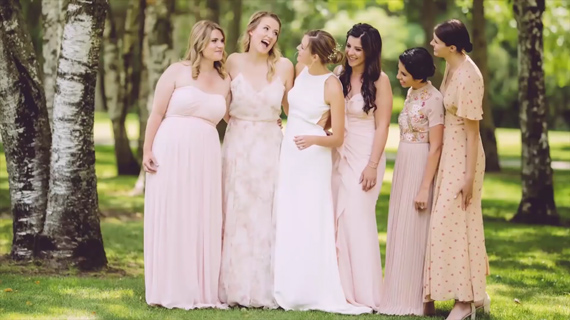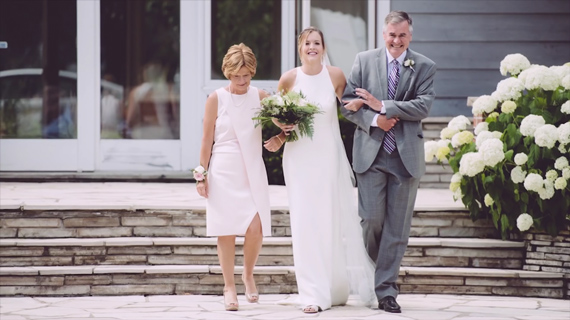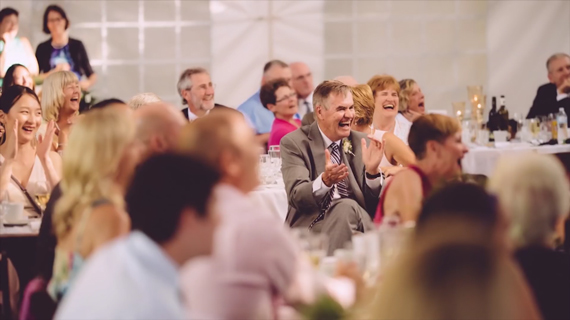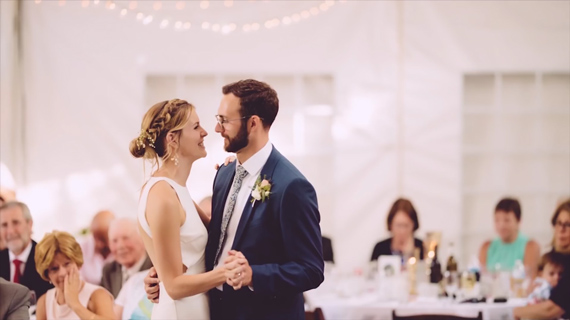Imagine you’re about to start a new job. You get anxious. And you’re really appreciate a detailed understanding of how things work at your new job so you can feel prepared and confident. Well, if you’re a budding wedding photographer ready to make the leap into the professional world, you’re in luck. Taylor Jackson shares behind the scenes footage of a wedding day and also shares his tips and tricks that he uses while photographing weddings:
The Initial Shots
To start the session, Jackson warms up by doing two basic things: shooting some detail photographs and making the people around know that he is the photographer and will be taking their photos throughout the day. Here are some tips to start the day off:
- Start by taking detail shots. Take photos of the ring, the jewelry, bouquets, and the dress.
- If the couple is spending some time with their friends preparing for the day, be sure to take some photos of the candid moments.
- If they are comfortable with it, take some photos of the bride and groom getting ready for the ceremony. While doing so, be wary of the background. If the room is all messed up due to many people getting ready in the same room, Jackson recommends using something like an 85mm lens to have a tight frame around the subject. Otherwise, if the room is less cluttered, you can get away with shooting with something wider, like a 28mm lens.
- While shooting, candid shots give pure emotions. However, at some point of the shoot if you feel that you can get a better shot by asking the people to pose, do so without any hesitation.
- Clarify with the client whether they want photos to be taken during the first look or not and comply with what they want. Since it is a private moment, some couples may not want their photos taken.
Outdoor Photography Session

Now that they’re all prepared and have had their first look, you can have a quick photo session with the couple and then with their friends. Here are some things you should consider while doing an outdoor photo shoot on the wedding day:
- Pose the couple in a way that signifies love and romance. Holding hands, walking together, gazing into each others’ eyes, or a quick kiss to the lips can be some classic poses to shoot.
- As far as gear is concerned, you can use something like an 85mm, 70-200mm, or even the 135mm being used by Jackson. These focal lengths when used wide open create beautiful bokeh and melt the background away.
- Look for areas with shade to pose the bride and the groom, and even their bridesmaids and groomsmen. Areas with harsh sunshine can blow away the details and, more importantly, make it difficult for the subjects to pose.
- Jackson’s way of working is to take a lot of photos and select afterward rather than having to miss the perfect moment.
- If the couple has had something special designed to be used as a photo booth, be sure to take some photos there as well. Why let their efforts go unnoticed?
- While taking group photos of friends and family, ask them to talk to each other—or pretend to be doing so—or even share a joke to make them laugh. A photo with such emotion and expression looks much better.
- If there is a limited area with good lighting in the place the wedding ceremony is taking place, then it’s fine to set a shop up in that area. That will result in a much better photograph and make your work easier as well.
Wedding Ceremony Photo Shoot

The wedding ceremony is one place where the photographer cannot pose or control the subjects. So, as a photographer, you need to be prepared in a different way to take photos during the wedding ceremony.
- Use a versatile zoom lens. Jackson likes to shoot wedding ceremonies with a 70–200mm lens as long as the location has good lighting.
- If the ceremony is happening outdoors, the lighting conditions may change by the second depending on the clouds. For such conditions, shooting in a semi-automatic mode like aperture priority is okay. You wouldn’t want to miss a shot while fiddling with the camera settings.
- Be aware of the kind of light that is hitting on the subjects’ faces and position yourself so you can photograph the flattering light.
- If there are kids walking down the aisle, get down to their eye level. Don’t be lazy.
- Try to stay on the outskirts of the wedding and never come in between the parents and the couple.
- Refrain from being the center of attention by photographing from the middle of the aisle or by being too close to the bride and the groom. Instead, try to remain invisible and photograph unadulterated reaction shots. The only moment that it is okay for you to shoot from the middle of the aisle can be during the ring exchange and the first kiss ceremony.
- During the ring exchange ceremony, Jackson uses this neat trick of switching his camera into crop mode and thereby effectively changing his focal length from 200mm to 300mm. He does this by assigning the function button of his camera to switch the camera to crop mode. He does lose some megapixels in the process, but that’s not important. What is important is that he gets a closer shot of the ring exchange ceremony without getting closer physically.
Cocktail Hour Photo Shoot on a Wedding Day

Jackson admits that photographing during the cocktail hour is not his favorite part of the day, but it is a part of the job and it has to be done. Here are a few tips that he shares for photographing during cocktail hour:
- Shoot with a longer focal length like an 85 prime, a 70–200mm or 135mm prime.
- Walk around the venue and hang out around people who are in good light and seem to be having some good time. Take their photos when they smile.
- You can also shoot some detail photos of the table setup, the flower arrangement, and the candles.
- Jackson takes this opportunity to take some food photos so that the caterer can use those photos to post to social media. This can aid in business promotion for yourself. You want as many people as possible using your photos to aid in word of mouth marketing.
- If the dinner is indoors, the lighting will obviously be not as good as it was outdoors. So, if you’re shooting in aperture priority mode, keep an eye out for the shutter speed. If it dips too low, then the photos can turn out to be blurred with motion. You may want to switch over to manual and have a complete control of the settings.
Shooting During the First Dance

- Since the couple sharessome romantic time together during the first dance, it’s better to photograph from a distance. Taylor uses his 135mm lens during the first dance.
- It also helps to keep the frame limited just on the couple by using a longer focal length as all the people in the room may not be paying attention to the bride and the groom or may be doing something awkward. So, blurring them away helps.
To conclude everything, Jackson suggests two things. First, it is not necessary to be too artistic during wedding photography. You are there to document an important event, so focus on getting clean images with the best light. And second, find good light and make people look good.
Here’s a pretty interesting closing remark from Jackson:
“Always remember to have a good time, because if you’re smiling and enjoying yourself, everyone is going to believe that you’ve done an amazing job before they’ve even seen a single picture.”
Go to full article: Behind the Scenes with a Wedding Photographer
What are your thoughts on this article? Join the discussion on Facebook
PictureCorrect subscribers can also learn more today with our #1 bestseller: The Photography Tutorial eBook
The post Behind the Scenes with a Wedding Photographer appeared first on PictureCorrect.
from PictureCorrect https://ift.tt/2Lk3oSR
via IFTTT






0 kommenttia:
Lähetä kommentti